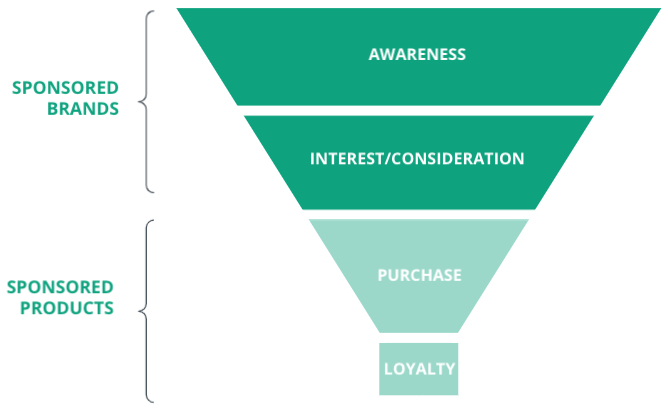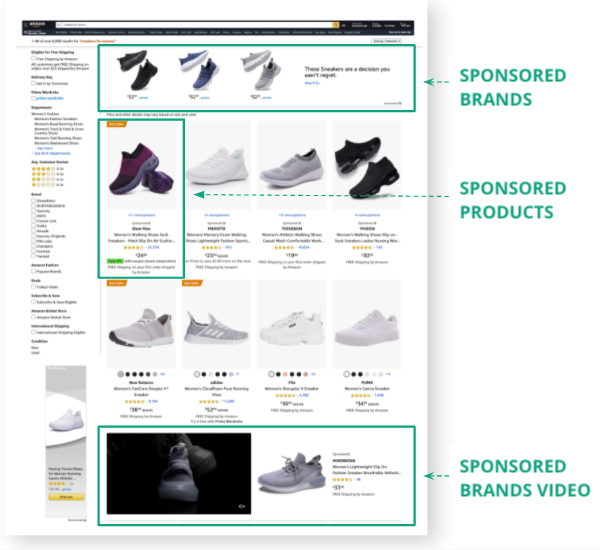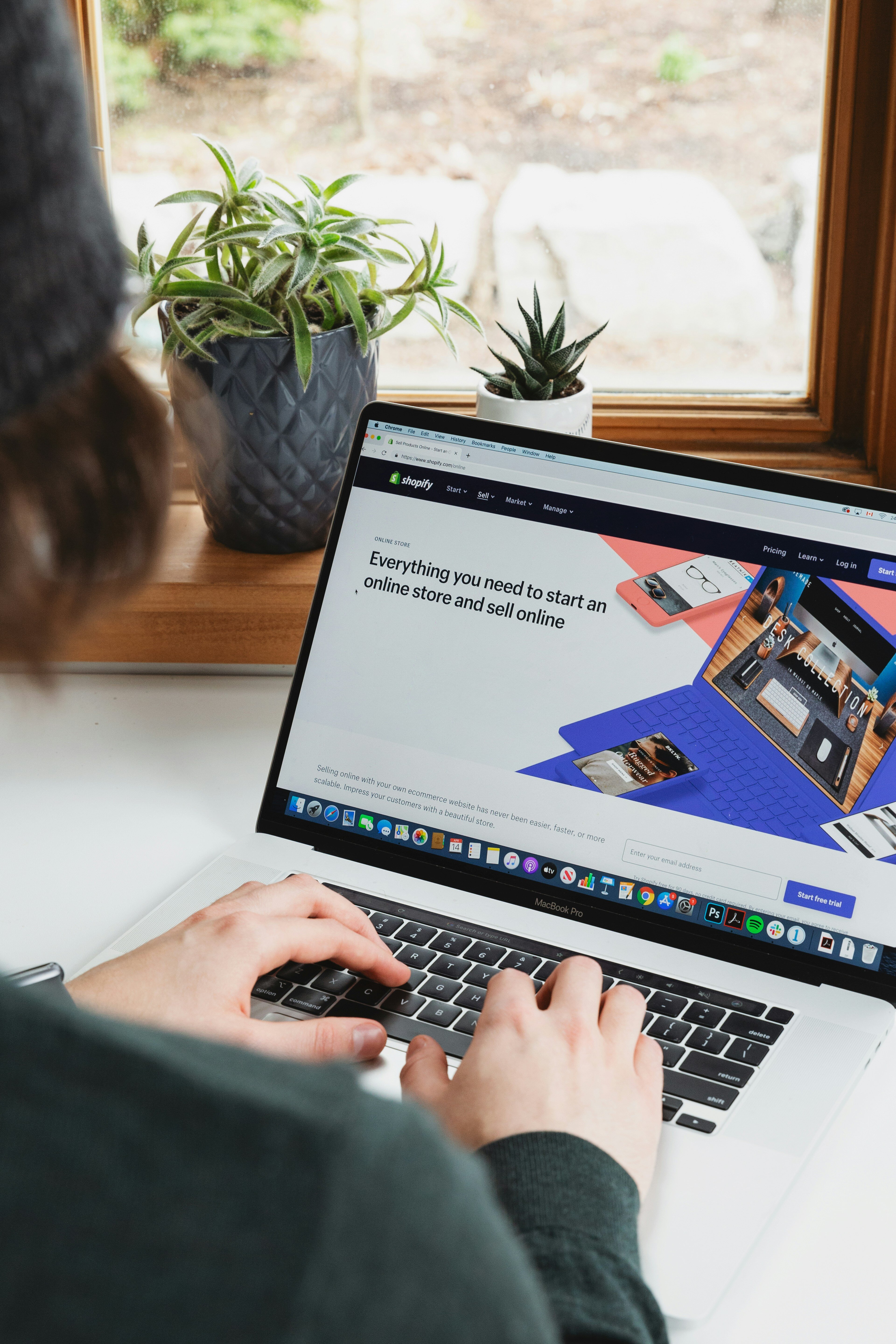Amazon Sponsored Brands ads are one advertising option in Amazon Advertising. They’re available in 3 formats — Product Collections, Store Spotlights, and Sponsored Brands Videos. They target the middle to upper end of your eCommerce funnel.
To help you use Sponsored Brands effectively, in this post, I cover a 3-step strategy to use Sponsored Brand ads to grow brand awareness and sales revenue — one Finch uses with a real client. The steps are:
- Analyze your data and make adjustments
- Maximize ads with your learnings
- Launch Amazon Sponsored Brands ads to open — and fill — your funnel
It’s a strategy that might surprise you — especially since it starts with a different Amazon Advertising option.
Why Sponsored Brands?
In a previous post, Amazon Sponsored Brands best practices, I covered the basics of Sponsored Brands ads and how to select your KPIs and optimize your ads. That information is still valid.
It’s timely too. Because if you’re not using Sponsored Brands today, it may be time to start. eMarketer reports that Sponsored Brands now makes up 23% of all of Amazon’s pay-per-click advertising revenue.
That means more and more of your competitors are using the format to create brand awareness for their own brands and products. So Sponsored Brands is a good next move on Amazon if you’re not using it yet.
Sponsored Brands ads drive brand awareness, interest, and consideration. They’re ideal for getting new customers into your funnel so you can convert them to buyers.
3 Steps for Growing Your Brand and Sales on Amazon
This 3-step growth strategy isn’t just theoretical. Finch uses it with real-world clients. One of those clients is Avery, a manufacturer of specialty label and packaging solutions. Avery is based in Germany, but sells to customers worldwide, including on Amazon and through its Amazon Brand Store.
Before I share with you what Finch and Avery accomplished with this 3-step approach, here’s the strategy.
Step 1: Analyze Your Data and Make Adjustments
Surprisingly, the first two steps of our strategy don’t directly involve Sponsored Brands. But, we do use them to lay a foundation for our Sponsored Brands ad, so they do indirectly involve Sponsored Brands ads.
Step 1 is simply analyzing your historical data on what ads, keywords, and messages work and what sales you might be missing. With that data, you make adjustments to your campaign structure and advertising cost of sale (ACoS).
Many of the companies we work with at Finch are already running Amazon Sponsored Products ads. So we start there typically.
I have clients who object to this idea because they don’t have the resources to do this. And collecting data takes a bit of time and volume. It’s a valid point, but one easily overcome with automation.
I cover how automated optimization of Sponsored Brands ads saves time — up to hundreds of hours — among other things in another post. The same benefit applies to automating Sponsored Products ads.
Automation lets you advertise at scale and collect data that you can then harness for growth.
Figure 1: A look at where the three different Amazon Advertising options — Sponsored Products, Sponsored Brands, and Sponsored Display — fit into the customer experience on Amazon.
Why Start with Sponsored Products Ads?
By analyzing the historical performance data of Sponsored Products campaigns you can:
- See which products are selling well.
- See which products aren’t getting found.
- Look at ACoS to find new or untapped opportunities.
Simultaneously, you can look at your competitors’ activity. You do that with Amazon Brand Analytics, Amazon Marketplace, and some third-party tools. Your goal here is to see:
- If keywords and products have high competition.
- Where you can take advantage of untapped competitive opportunities.
All of this data lets you know which products and keywords to start with when you launch your Sponsored Brands ads.
Step 2: Maximize Ads with Your Learnings
Once you’ve collected your data, it’s time to get serious and use it to optimize the revenue from your Sponsored Products ads within your target ACoS. It also lets you adjust your setup by restructuring your campaigns by brand, category, or goals to more easily do more of what’s working.
What you’re doing now is building a foundation for what you’ll do with your Sponsored Brands ads — laying a foundation to pull more customers into your funnel.
You want to collect data from your Sponsored Products ads for at least 1 month (6 if you’re already running ads). This gives you a strong dataset to use to launch your initial Sponsored Brands campaigns. Your dataset tells you:
- Which products and keywords aren’t profitable and that you don’t want to use for your ongoing Sponsored Products or Sponsored Brands ads.
- Which keyword sets to expand on an ongoing basis to create a strong(er) foundation for your ads.
- If your pricing and shipping are competitive and sets you up to win the Buy Box.
- Whether your content — images, titles, descriptions, enhanced brand content/A+ content, customer questions, reviews — is compelling enough to drive success and growth or needs improved.
With all of your data in hand, it’s time to launch your Sponsored Brands campaigns.
Step 3: Launch Amazon Sponsored Brands Ads to Open — and Fill — Your Funnel
With your data in hand, it’s time to launch your Sponsored Brands campaigns. If you haven’t yet though, first, do few things:
- Define your main goal, such as:
- Increased sales for which you’ll want to target specific high-performing keywords
- New customers for which you’ll want to target keywords that drive new-to-brand sales
- Brand awareness for which you can use generic keywords, including your competitors’ keywords.
- Build a Brand Store. It takes time but is well worth the effort.
- On average, Amazon sees a 29% better return on advertising spend (ROAS) when Sponsored Brands campaigns link to a Brand Store instead of a product details page.1
- Advertisers who connect Sponsored Brands to a Brand Store see more than a 61% increase in average order value.1
- Allocate budget. You need budget beyond your performance budget; you want a separate brand and testing budget for your Sponsored Brands campaigns.
- Pick KPIs to use both on and off Amazon to use to gauge the success of your Sponsored Brand campaigns. Good KPIs include:
- The Best Seller rank on Amazon
- Increased brand traffic on Google
- Search volume on Amazon
- Brand store visits
Pick Your Ad Format
Sponsored Brands ads can be used for a variety of goals, which is why I suggest you define your main goal before you start advertising. With your main goal in hand, you can target the right keywords and Sponsored Brands ad formats. I cover Sponsored Brands ad formats in a previous post. Table 1 highlights aligning your goal, KPI, and targeting with the best ad format.
| Goal | Promote multiple products | Promote my brand | Promote one product |
| Top KPI | ACoS | CTR | ACoS |
| Desired Placement | Top of search | Top of search | In search results |
| Desired Targeting | Keyword pull strategy or category push strategy | Keyword pull strategy | Keyword pull strategy |
| Format | Product Collection | Store Spotlight | Video |
Table 1: Goals, KPIs, and targeting that align with the different Sponsored Brands ad formats.
Pick Your Targeting
When targeting your Sponsored Brands campaigns you have two options: keywords and category. At some point, using both is ideal. I recommend though starting with keyword targeting.
- Keyword: Choose search queries that match the intent of customers who see your ads. Your keywords can be very narrow for maximum control.
- Category: Opens up new placements and broadens your reach. You do have less control and — compared to keyword targeting — won’t get the same volume.
Hint: There are 4 newer metrics available to advertisers new-to-brand orders, % of orders new-to-brand, new-to-brand sales, and % of sales new-to-brand. When you use the new-to-brand metric, bid on both brand keywords and category-level keywords to help drive efficiency.
Start Advertising with Amazon Sponsored Brands Campaigns
With your goal, your data, your ad format, your keywords, and your targeting selection, you’re ready to start running Sponsored Brands campaigns.
Real-World Results
Finch followed this 3-step process with Avery and launched its Sponsored Brands campaigns in October of 2020. Table 2 shows results through June of this year. Granted, Finch’s approach, which uses a granular campaign structure, data analysis, automated campaign optimization, and long-term strategy, didn’t hurt. But the results were only possible with Finch’s approach and this 3-step strategy.
| October 2020 | December 2020 | February 2021 | June 2021 |
| Launch of Sponsored Brands Campaigns:
200% increase in budget 25% planned increase of ACoS |
Q4 YoY results:
540% increase in store visits 31% reduced CTR, as a result of testing and a broader approach 70% revenue increase |
YoY results:
+200% increase in store visits YoY |
Q2 YoY results:
Tripled budget and revenue Optimized and decreased ACoS by 47% Increased store visits 100% |
Table 2: The results of Finch launching Sponsored Brands campaigns for Avery on Amazon.
By adding Sponsored Brands to its Amazon Advertising mix, Finch drove growth for Avery in the form of an 3x revenue increase in the first 9 months.
Last Words
After you launch Sponsored Brands ads, don’t abandon your Sponsored Products ads. Running both lets you capture users across the entire customer journey.
- Some advertisers who run both ad types see a 30+% increase in category impression share.2
- Advertisers who run both see an average 12+% lift in return on ad spend (ROAS) and if they run both for more than 3 months that lift goes up to more than 16%.2
Adding Sponsored Brands to your Amazon Advertising mix is a smart move and can help you grow brand awareness and sales revenue. If you want help with your paid advertising strategy and executing ads on Amazon and other channels and platforms, contact Finch. We can help your eCommerce brand reach your target Advertising Cost of Sales (ACoS) goals, reduce complexity, scale and grow, and access a highly effective granular campaign structure.
1 Amazon US data, 2020.
2 Amazon internal data.








